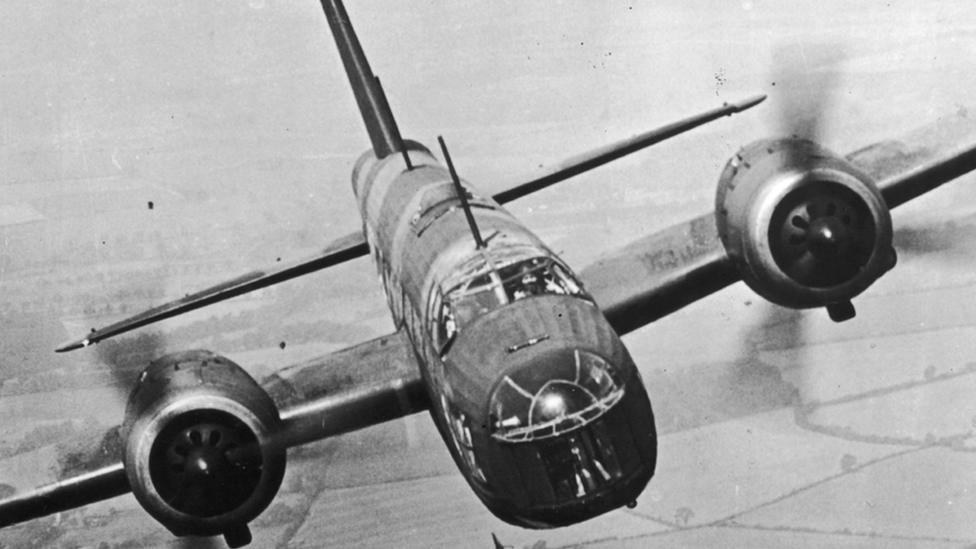Dutch bulb mosaic marks Operation Manna campaign
- Published
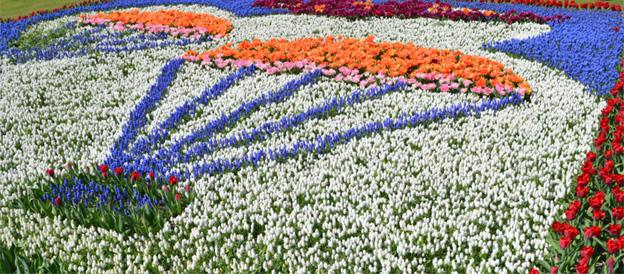
About 40,000 bulbs were used to create the mosaic
A floral mosaic showing a Lancaster bomber dropping food supplies in Nazi-occupied Holland has been unveiled at Lincoln Cathedral.
For 10 days from 29 April 1945, Operation Manna dropped nearly 7,000 tonnes of food over The Netherlands.
The country had lost 20,000 people through starvation, with a further 980,000 classed as malnourished.
The bulbs were donated by the Dutch government to the International Bomber Command Centre (IBCC).
Life or death
A ceremony at the cathedral to unveil the mosaic was attended by representatives from The Netherlands, Canada, Australia, New Zealand, Poland, Germany and the US.
Bomber Command veterans also met with some who had been helped by the campaign.
Nicky Barr, from the IBCC, an education facility being built in Lincoln, said Operation Manna was the difference between "people living or dying".
The mission followed a blockade of supplies by German forces in retaliation for Dutch rail companies going on strike in support of an Allied offensive, she said.
The winter of 1944/45 was also particularly harsh, compounding the problem of food shortages.
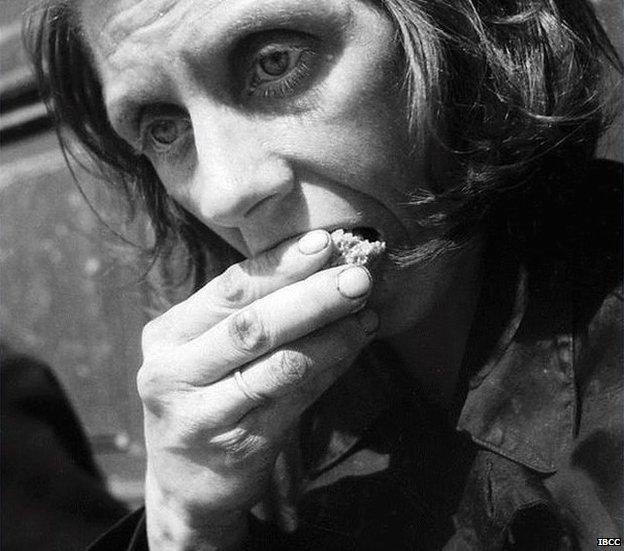
Almost one million people were classed as malnourished in The Netherlands at the time
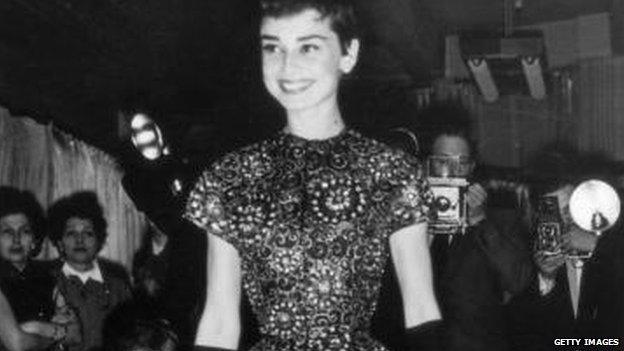
Many, including actress Audrey Hepburn, were struggling to get enough food to eat
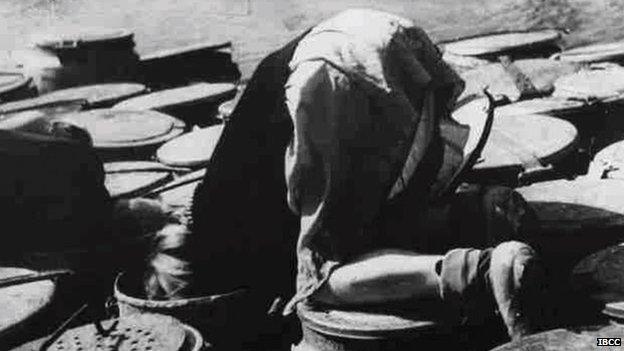
Some even scavenged what they could find from soup kitchen containers, while others ate flower bulbs in desperation
David Fellows, who flew missions from RAF Binbrook in Lincolnshire as part of Operation Manna, said: "We used to go across to Holland every fifth year and we used to get hugs from young children who would say 'thank you for saving my grandmother', but to meet some of the people who were there at the time is highly emotional."
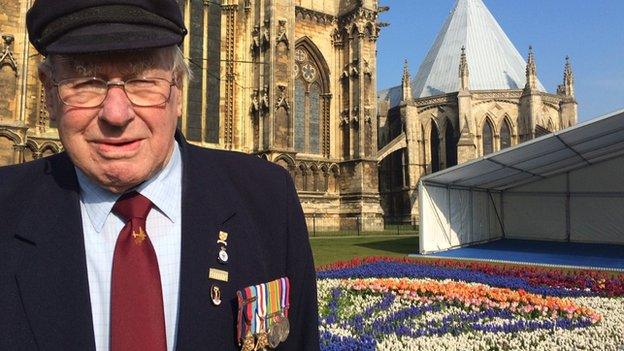
Veteran David Fellows took part in the ceremony at Lincoln Cathedral
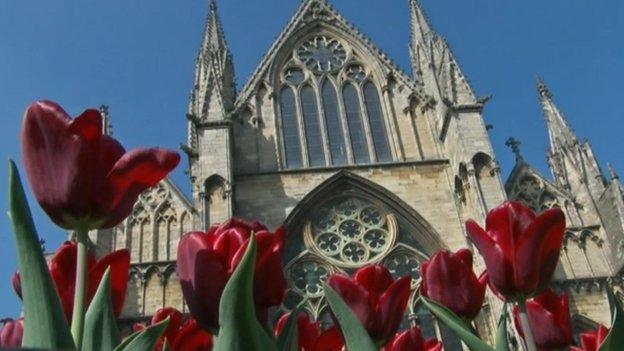
The mosaic is made up of tulips and grape hyacinths
Recalling the missions, he said: "We knew there were thousands of Dutch people dying - and they were in dire straits."
He said despite concerns the Germans "could open fire on us, the RAF being the RAF took the decision to fly anyway".
He added he was proud to have been part of such an important campaign.
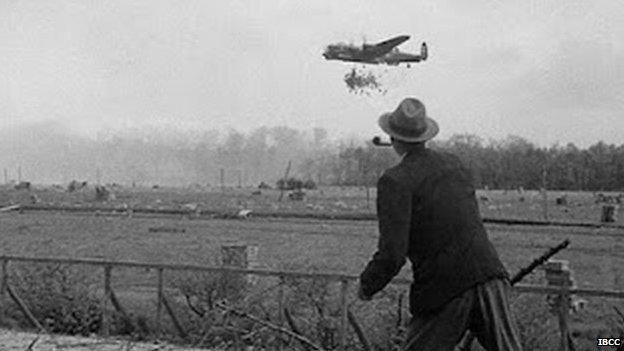
More than 3,000 flights dropped the supplies in the 10 days preceding the German surrender
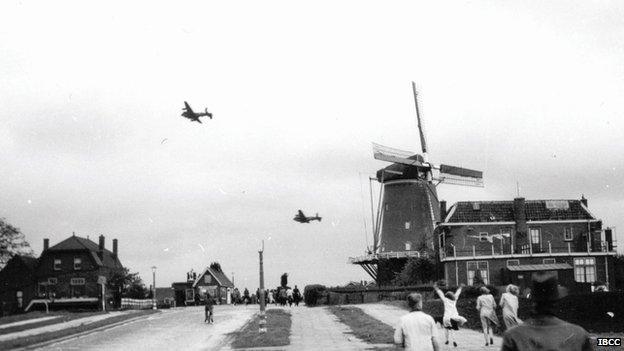
People rushed out to welcome Lancaster crews as they dropped food parcels
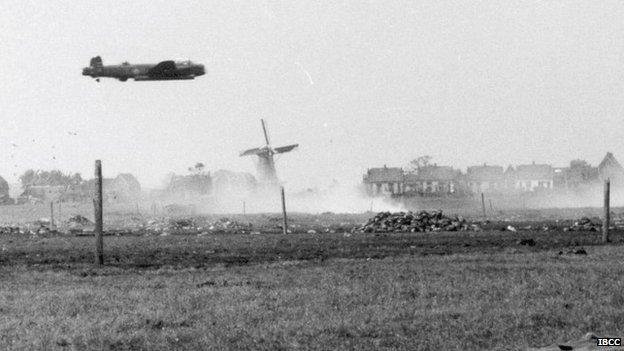
One veteran described dropping the food bags as "a mission of joy"
- Published26 September 2014
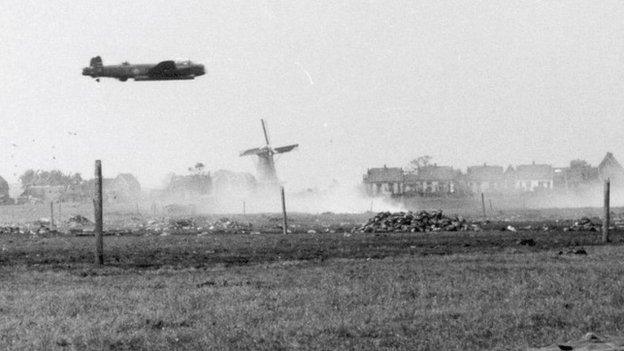
- Published22 September 2014
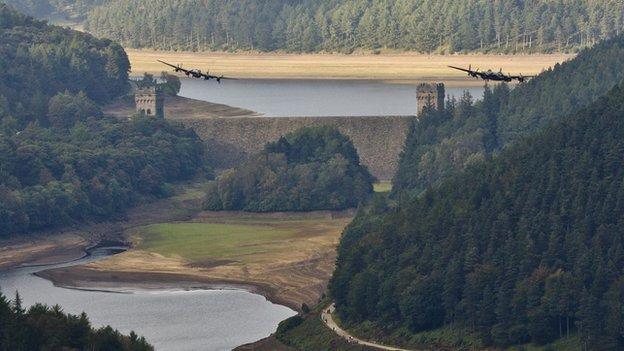
- Published7 September 2014
(2).jpg)
- Published5 August 2014

- Published10 February 2014

- Published27 September 2013

- Published31 May 2013
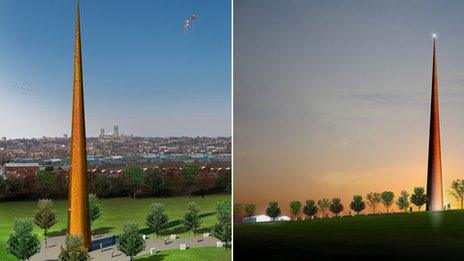
- Published27 June 2012
